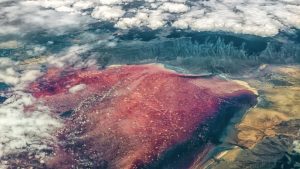Trek Mount Kilimanjaro Barefoot: A Guide
Mount Kilimanjaro, the highest peak in Africa, is a magnificent challenge for any adventure seeker. While many choose to trek this iconic mountain in traditional hiking boots, there is a growing trend of individuals attempting the climb barefoot. For those looking to take on this unique challenge, proper preparation and techniques are essential to ensure a safe and successful journey to the summit.
Preparation for Barefoot Trek on Mount Kilimanjaro
Before embarking on a barefoot trek up Mount Kilimanjaro, it is crucial to properly prepare both mentally and physically. The first step is to ensure that you are in good physical condition and have experience with high-altitude trekking. It is also recommended to consult with a healthcare professional to assess your fitness level and discuss any potential health risks associated with high-altitude climbing.
In terms of gear, while you may not be wearing boots, there are still essential items that you will need to bring along for the trek. These include comfortable and durable clothing, such as moisture-wicking shirts and pants, as well as a good quality backpack to carry your necessities. It is also important to pack plenty of water and high-energy snacks to keep you fueled throughout the climb.
For those looking to take on the challenge of a barefoot trek up Mount Kilimanjaro, it is highly recommended to book a guided tour with a reputable company such as Sunset Africa Safari. Their experienced guides are knowledgeable about the terrain and can provide valuable support and guidance throughout the trek.
Tips and Techniques for Safely Climbing Barefoot
Climbing Mount Kilimanjaro barefoot requires a different set of skills and techniques compared to traditional hiking. Here are some tips to help you safely navigate the mountain without the protection of shoes:
-
Start Slow: It is important to pace yourself and acclimatize to the altitude gradually. Take breaks as needed and listen to your body to avoid overexertion.
-
Mind Your Step: Be mindful of where you place your feet to avoid sharp rocks and uneven terrain. Take your time and watch your footing carefully.
-
Build up Calluses: In the weeks leading up to your trek, gradually increase the amount of time you spend barefoot to toughen up the soles of your feet. This will help prevent blisters and discomfort during the climb.
-
Stay Hydrated: Proper hydration is crucial when trekking at high altitudes. Make sure to drink plenty of water throughout the day to avoid dehydration.
-
Listen to Your Guide: Your guide is there to help you navigate the mountain safely. Follow their instructions and advice to ensure a successful climb.
Embarking on a barefoot trek up Mount Kilimanjaro is a challenging but rewarding experience. With the right preparation and techniques, you can conquer this iconic peak and create memories that will last a lifetime. For those interested in booking a guided tour with Sunset Africa Safari, please contact info@sunsetafricasafari.com to inquire about availability and pricing.


